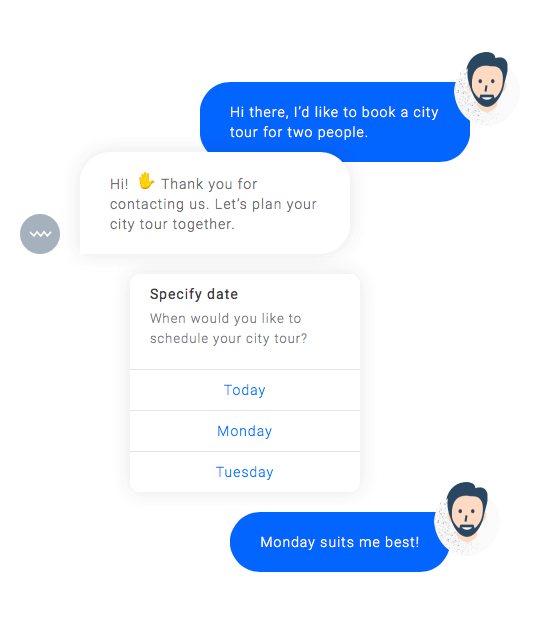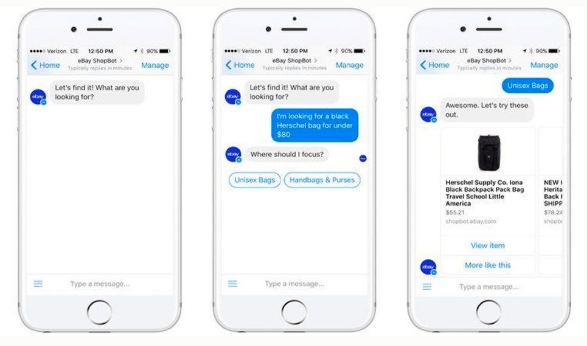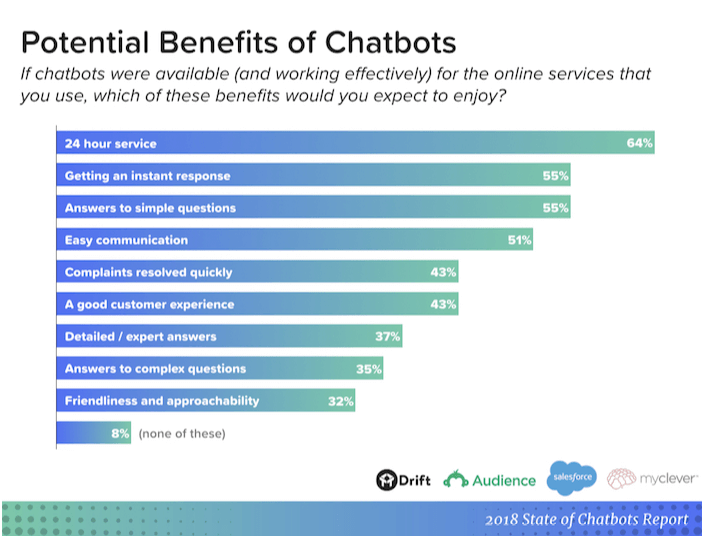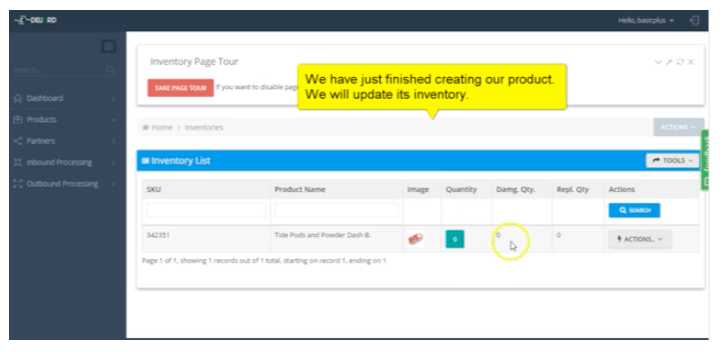Table of contents
Not only Augmented Reality (AR), but AI and Machine Learning are considered powerful tools for e-commerce merchants in this era and beyond. Let’s find out why and how.
In the age of big data, e-commerce websites have access to a lot of personal data including demographics, exact geographic location, and personal preferences. AI and machine learning technology carries enormous value and can be applied to many facets of the e-commerce industry.
Whether you realize it or not, you’ve most likely seen both of these in action before. For example, Amazon’s personalized product suggestions or Facebook’s facial recognition for photo tagging. However, completely integrating both technologies into an e-commerce platform is a relatively new possibility.
In fact, AI can help merchants make better future predictions about sales, provide better customer support, and re-target customers who got away.
Before we dig any deeper, it’s important to make a distinction between Artificial Intelligence (AI) and Machine Learning (ML).
- Artificial Intelligence: Machines that are able to complete certain tasks by mimicking human cognition
- Machine Learning: A branch of artificial intelligence, a method used to improve performance through experience over a period of time
Okay, now we can begin.
7 benefits of using AI and machine learning in e-commerce
1. Personalize product recommendations
AI can crunch customer behavior on any website, using algorithms to make an accurate prediction in regards to what products our customers will like. Then, it makes a recommendation that your customer is more likely to act on.
For instance, in late 2015, The North Face joined the AI movement and launched its very own virtual assistant powered by IBM’s Watson. It help consumers find their perfect jacket through conversational Q&A. After two months, the research not only showed a high satisfaction rate but also that sales conversions were at an impressive 75%.

The service uses customers’ vocal queries, shopping needs, and travel plans as input and recommends items. This is not only meet customers’ criteria but also suitable for the location the customer plans to use them—even taking into account the weather forecast.
AI & machine learning allow you to have a hyper-personalized product recommendations
Another impressive example in the eCommerce sector is from Amazon. It uses your browsing history and your purchase history to recommend you more products that you’ll like. Not only is this good for Amazon; it also benefits you the customer. Instead of being greeted by tons of products you have zero interest in, you’re able to quickly sift through things there’s a high chance you will be interested in. It’s this kind of hyper-personalization that customers want in 2019 and beyond.

To improve your own store’s recommendations, display a list of suggested products that are based on a customer’s past browsing history. Add a “frequently bought together” feature, as well as a “related to items you’ve viewed” feature.
You can also personalize the user experience by displaying items that are related to past purchases.
2. Enable smarter searches
Have you ever tried to find something in an online store and gave up?
It happens to all of us — but it shouldn’t be happening now that AI is here.
In brick-and-mortar stores, human assistants are typically on hand to direct us to what we want. Although eCommerce stores can’t replace human assistants, they can use AI and machine learning. This can boost their store’s searches so that they can understand both long search terms and a customer’s intent.
AI can improve product search for misspelled words
Commonly misspelled words are a lost revenue opportunity for eCommerce companies. On average, 25% of all eCommerce search queries are misspelled, and the modern shoppers won’t take the blame for typing the wrong command. The majority will just abandon the website in two minutes or less if they can’t find what they were looking for.
Artificial intelligence has made it possible to understand the images.
Ever come across a situation where you liked any product or item but don’t what it is called or what it is? Artificial intelligence service eases this task for you. The concept of image search is implemented in E-commerce websites with the application of artificial intelligence.
Buyers can make a search on the basis of images. Mobile apps of E-commerce websites can find the product by just pointing the camera towards the product. This eliminates the need for keyword searches.
Read more: “SimiCart’s New Image Search Feature: Harness the power of Artificial Intelligence (AI)”

For example, Boohoo, an apparel brand targeting image-oriented Millennial and Gen Z consumers, clearly took note. The company recently partnered with Syte – a startup offering image recognition technology for retailers – to add visual search functionality to their mobile website. The Camera Button added to the search bar, allows users to upload their pictures and discover the most visually similar products in stock. Shoppers are then presented with a selection of relevant products, additionally populated with even more similar styles and “Shop the Look” curated picks.
The early tests showed that shoppers who used the “View Similar” functionality through the Camera app had a conversion rate over 100% higher than those who didn’t use it. BooHoo also reported a 135% increase in pages viewed per session and a 12% increase in average order value. Lately, Boohoo has been at the forefront of eCommerce innovation, launching several other features that drive sales.
Target and Asos are two retailers that have made a big commitment to visual search as part of their eCommerce experience. Target launched a partnership with Pinterest in 2017 that integrated Pinterest Lens. This is Pinterest’s visual search tool for the physical world, into Target’s app. It allows shoppers to snap a photo of a product while out and about and find similar items on Target’s website.

It is impossible not to mention voice shopping experience guided by AI
Japanese retailer Uniqlo is known for its easy-to-wear and easy-to-buy designs. Now they are extending their signature ‘simpleness’ to the digital realm. The Uniqlo IQ app, launched in the summer for Japanese customers, is a new voice-activated digital concierge service for shoppers.

You can interact with the app using voice, text or images. The intelligent assistant will suggest personalized looks based on occasion, past purchases, or even daily horoscopes. Users are then prompted to purchase suggested looks online or directed to the nearest store with available inventory.
All in all, make sure that your search box is easy to find and add an autocomplete feature. This improves the search experience because it limits the number of things a user needs to do to find what they want. It also prevents misspellings and missed opportunities for both the customer and the merchant.
Let users search within a particular department too, and improve your product labeling and metadata to boost the accuracy of your search results.
3. Offer 24/7 customer service

The thing about your eCommerce store is that it’s always open, even when you’re sleeping!
A few years ago, this would have represented a problem: Who would have been there to respond to customer queries as quickly as possible? Would you be the one scrambling out of bed at 3 am, stubbing your toe on a desk. Then blinking furiously at your phone to respond to a customer in Vietnam who’s demanding to know if you ship to Hanoi?!
Then, once you’re back in bed at 3:18, your phone buzzes again. This time it’s a customer from New Zealand. Damn those infernal time zones and stubbed toes.
Fast-forward to 2018 and we now have AI in the form of chatbots to provide better customer service.
For instance, eBay ShopBot has created an opportunity for eBay. It can reach a new group of shoppers on one of the largest social messaging platforms – Facebook Messenger, which has over 1billion monthly active users.

Chatbots are possibly the most accessible form of AI. They respond to customers instantly. As they use machine learning to learn more about each customer specifically, they’re able to provide satisfactory, personalized answers that nudge a customer closer towards a conversion. Chatbots collect data, track behavior, and they help to provide a seamless shopping experience.

Make a start by imbuing your chatbot with your company’s values. Create an experience for the user that’s reflective of your brand. While making sure that the bot’s responses are short, direct, and always moving a customer closer to a resolution of their problem(s).
4. Better inventory management
If you’ve got an overstock, you’re losing cash. If you’ve got an understock, you’re missing out on sales. It’s the kind of seesaw that all eCommerce merchants have had to wrestle with at some point.
If you’ve got an understock, you’re missing out on sales. It’s the kind of seesaw that all eCommerce merchants have had to wrestle with at some point.
Ah, in this case, the robots can help us.

Inventory management is a real pain in the butt and it can even be the downfall of eCommerce stores. 46%of US companies have admitted that they don’t track their inventory, while more than $1 trillion of capital is tied up in inventory.
Whether you’ve got an overstock or an understock, inventory management can pull the rug from under your feet. When done manually, it’s hard-to-impossible to make accurate predictions about sales. As a result, we end up with a cash flow problem.
Once AI is in motion, forecasts on future demands become a lot more precise. This allows you to control your supply chain with ease, and it also ensures that you know more about your customers and their behaviors. As a result, shrinkage is reduced, and you get to save time and cash.
How to improve your inventory management with AI and machine learning?
It’s a good idea to switch from qualitative forecasting methods to quantitative. This is when you use an inventory management tool to make better decisions that are based on the past performance of your products.
Assess your carrying costs when the time comes to ordering inventory, too. When you know what your carrying costs are, it’s easier to maintain a healthier level of inventory.
Use your tool to help you avoid an overstock or an understock, too. Both are these can be super costly, but they’re a common occurrence, especially in the eCommerce world.
5. Strategic Business Decisions
To end this, when running an eCommerce business, all actions and analyses come down to making strategic business decisions. These decisions rely on strong data which not only provides the raw numbers but also tells a story to the decision maker.
AI can support regular data retrieval, analyses and predicting on a regular basis, thus clearing the way for company team members to focus on strategy, rather than data analysis.
From sales forecasting to better decision making
Sales forecasting is another prediction-based application of AI – this time, for sales.
Using past sales data, industry-wide comparisons and economic trends, artificial intelligence can forecast sales outcomes and help companies to inform business decisions and predict short and long-term performance.
Sales forecasts can also help to estimate product demand, although sales teams should be careful to take other factors into account as well: for example, a company experiencing manufacturing issues may only sell a certain number of units due to a lack of stock, not due to a lack of demand for the product. Thus, using only sales figures to predict demand would produce an inaccurate forecast.
6. Cybersecurity
Artificial intelligence has also improved the cybersecurity of eCommerce websites. It can prevent or detect any fraudulent activities. eCommerce has to deal with a lot of transactions on a daily basis. Cybercriminals and hackers can hack the user account to gain unauthenticated access.
This can lead to the exposure of private data and online fraud. The reputation of the business also gets a big blow. To prevent this, Artificial intelligence and machine learning algorithms are developed that can mitigate the chances of fraud activities over the website.
7. Understand your customers better
Forget trying to understand the opposite sex, if you can’t understand your customer, you’re losing.
AI can improve brand loyalty by learning more about your customer than you ever dreamed was possible. Using machine learning, it crunches and analyses customer data which you can then use to make better merchandising and marketing decisions.
Ultimately, AI assesses individual customer inventory and behaviors to predict exactly what they want. It can dive into complex and vast journey analytics and uncover opportunities that you didn’t even know existed so that you’re in a position to provide a hyper-personalized experience.
The more you know about your customer, the easier it is to give them what they want.
Summary
As you can see, there are a lot of exciting opportunities for AI and machine learning in e-commerce. Many of these are either already in use or will be soon, so you can expect machine learning to become an increasingly important part of effective online retail.




